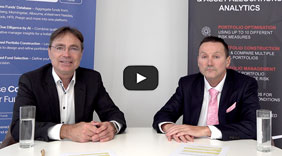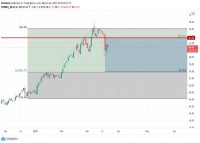|
An enduring challenge of private equity is fund raising, whether in connection with fund formations, portfolio company financings or limited partner secondary sales. The recent modification of the SECs rules on general solicitation and advertising, which formerly prohibited general solicitation and advertising in private placement offerings relying upon Regulation D, has created an opportunity for intermediaries to introduce innovative platforms to access a larger universe of potential investors and streamline the offering process. This article describes the new ACE Portal/NYSE Platform, which was recently created in part to take advantage of the changes in the SEC’s solicitation restrictions and which could facilitate private equity fundraising. Pursuant to the JOBs Act, the SEC in July 2013 amended Rule 506 and Rule 144A under the Securities Act to permit an issuer, in certain circumstances, to engage in general solicitation and general advertising in connection with private placements. Typically, such private placements were completed under Regulation D which previously prohibited general solicitations, such as emails, mass mailings, public websites and the like in connection with the offering even if the ultimate purchasers were in fact accredited investors or qualified purchasers. As a practical matter, this limitation significantly restricted the manner in which issuers and their placement agents could canvas the field of possible investors. Since in the view of many practitioners the placement agent needed to have a substantial preexisting relationship with potential offerees, it was difficult to expose an offering (whether a new fund or a portfolio company) to a large pool of investors. Because broad based solicitation was difficult under the rules, placement agents often contacted only a limited number of clients with whom they had a previous relationship (and tracked contacts, delivery of numbered PPMs, follow up indications, etc on elaborate spreadsheets), even though the offering might be of interest to many more eligible purchasers. The SEC's new Rule 506(c) permits general solicitation and general advertising – thus removing this impediment – so long as the issuer takes reasonable steps to verify that the actual purchasers of the securities are accredited investors and otherwise complies with the usual conditions of Regulation D. In September 2013, ACE Portal, Inc. and the New York Stock Exchange entered into a partnership in part to take advantage of these changes by creating a secure, centralized online marketplace for new issuances of private securities including private companies and funds. The platform has proved to be popular. According to ACE, over 40 private placements for 22 different agents totaling $1.1 billion in aggregate offering value have been offered to date, and 16% of the 40 deals listed on the platform have been private equity limited partnership offerings. According to ACE, the new issuance market for private securities in the US is approximately $900 billion annually. In addition, Prequin reports that $218 billion was raised in the first half of 2013 for private equity. The regulatory restrictions noted above often resulted in a highly inefficient and labor intensive fund raising process with inefficient pricing, failed offerings and extensive delays. On the other hand, as ACE points out the potential investor market for private securities is widespread, including over 40,000 qualified institutional buyers and approximately 8 million individual accredited investors as well as thousands of family offices and other qualified purchasers. Until recently, no single centralized platform existed for investors to review and invest in private securities offerings. The ACE platform is structured around the investment banker or placement agent. An issuer, whether a portfolio company or fund in formation, cannot go directly to potential investors through the platform. Instead, the issuers’ investment bank or placement agent first registers with ACE Portal which reviews the qualifications of the intermediary with an emphasis on reputational quality. ACE says that to date 56 investment banks and placement agents are registered with it. The investment bank or placement agent then posts the transaction to ACE which to date has had an average deal size in the neighborhood of $50 million or more. Upon paying ACE a posting fee and posting the transaction, the investment banker or placement agent and the issuer can upload disclosure information onto the platform. ACE has declined to list about 20% of proposed transactions, either because an agent was not involved or the transaction did not meet ACE’s minimum size requirements. Once listed, the platform will serve as a centralized point for the investment bank or placement agent to manage all aspects of the transaction and investor communications (including a virtual data room)as well as monitoring compliance and confidentiality requirements, updating transaction documentation and timetables and addressing investor questions and due diligence requests. Investor members access the platform by signing on to the site (www.ACEportal.com) and agreeing to an ACE Member Agreement for Investor Members. Eligible investors can confidentially review offerings currently available on the platform through a password protected site. ACE considers itself a technology provider and does not assume any responsibility for the accuracy or completeness of information on issuers. Accordingly, it would be prudent for an investor to undertake its own due diligence, including possibly engaging an investment adviser or consultant. The Member Agreement for investors provides for information regarding the investors’ status as an accredited investor, qualified purchaser or qualified institutional buyer; provisions on unauthorized use of the site; restrictions on use of site information; dispute resolution procedures; and extensive disclaimers and indemnities, principally designed to underscore the independent nature of ACE Portal’s involvement. The indemnity in favor of ACE covers any claims arising out of the investors’ access to or use of the site, including negligence claims. Although the portal could be attractive to a typical issuer and its investment banker (including in appropriate cases, a fund portfolio company) ACE points out that the platform is also intended for fund formations, whether private equity, venture or hedge. To date, it has been extremely difficult to raise funds for smaller fund vehicles through the customary fund raising process, even for experienced teams with impressive track records (such as groups spinning out of well known fund groups). For the most part, the only game in town for such potential sponsors is the SBIC program (which can provide SBA backed slow pay debentures of up to about $150 million on a 2 for 1 basis), but even SBIC approval is often difficult to obtain and in any event a slow and sometimes tedious process. To the extent that there exists an appetite for alternative investments (such as from high net worth individuals, family offices and the like) which cannot be reached through the traditional fund formation process, platforms like ACE Portal could offer an attractive opportunity. Finally, the ACE platform is also set up to handle secondary sales by limited partners of fund limited partnership interests. This too is a market which would benefit from more transparency and a larger universe of purchasers.
| |
|
This article was published in Opalesque's Private Equity Strategies our monthly research update on the global private equity landscape including all sectors and market caps.
|
Private Equity Strategies
New ACE Portal/NYSE Platform Could Facilitate Private Equity Fund Raising |
|





 RSS
RSS











